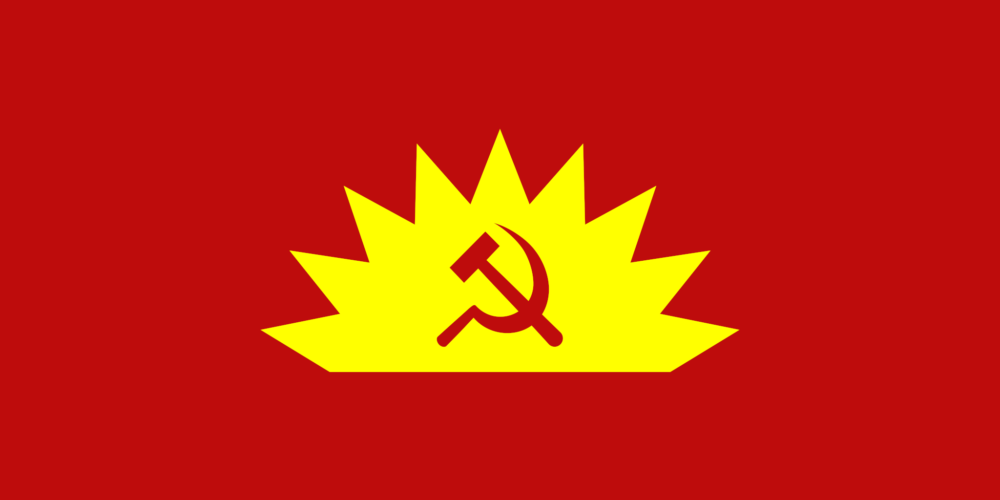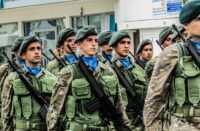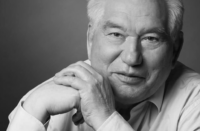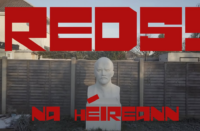“The CPI . . . has connected the economic struggles of the workers with the national struggle, drawing militant trade unionists into the national struggle and revolutionary national fighters into the economic struggles.”—An Appeal to IRA Volunteers, published in the Irish Communist, 1934
The Communist Party of Ireland managed to make several successful, and at times dramatic, interventions in the class-national struggle through the Revolutionary Workers’ Groups, which became the refounded CPI in 1933. In 1932 it managed an inspiring victory when it led unemployed workers in Belfast in the outdoor relief strike, uniting Catholic and Protestant people against the Orange state. Even the RUC noted that the RWG “seemed to be the organisers of the whole show.”
Tommy Geehan, a former IRA member from the Falls Road, was the figurehead of the outdoor relief strike, along with several other communists, such as Betty Sinclair and Seán Murray. At one meeting he said to the workers: “If you want anything done in the line of getting better conditions, then you are going to be damned foolish to wait for the next general election to do it.”
At the early stages of the strike the workers went around different communities and work-places and held street meetings. Parents got their children to go on strike from school. At one rally in Belfast more than 60,000 attended. The state deployed armoured cars to patrol both Catholic and Protestant areas. Policemen were imported from England. Two workers were killed by the RUC, with 100,000 mourners at the funeral of one, where two communists were pallbearers.
The RWG received an influx of members, workers from the Shankill Road as well as IRA volunteers. After the outdoor relief strike ended, with most, but not all, the demands being won, the IRA was approached by Protestant workers involved in the Great Northern Railway strike who requested the IRA to blow up parts of the railway. It would be impossible to imagine such a scenario before the outdoor relief strike, or ever again after the recent conflict.
The RWG, later CPI, had achieved a massive success in its political leadership of the outdoor relief struggle. The fact that there were not many communists at the time meant that there were limitations on what the struggle could achieve; and anti-communism was rampant, north and south. An RWG member, Jimmy Gralton, became the only citizen deported from the Irish state, after he opened the Pearse-Connolly Hall in Co. Leitrim. (The event was the subject of the film Jimmy’s Hall in 2014.) In 1932 a mob burned down the head office of the RWG.
Internal reports of the CPI in the early 1930s reported that the majority of members were involved with the IRA. The culmination of this engagement led to the Republican Congress, put together by the socialist republicans Peadar O’Donnell, Frank Ryan, and George Gilmore. Congress concentrated on bringing together republicans, trade unionists, housing activists, and Protestant workers from the Shankill.
Congress never survived the damaging split in 1936, when the CPI, along with O’Donnell and Gilmore, took an opposing side to Mick Price and Nora Connolly over whether Congress should call for a Republic or a Workers’ Republic, and, more importantly, whether Congress should continue as it was or work to launch as a political party.
In defence of the CPI’s position in the debate, it should be pointed out that there were not just one but two attempts at building just that revolutionary party that Price and Connolly supported. In 1932 the IRA established Saor Éire, at the nudging of O’Donnell, as a left-republican political project, only for it to face intense Church opposition and be shut down, with much of its enthusiasts joining up with the Republican Congress.
The second revolutionary party was the CPI itself; and it is difficult to see how Price and Connolly could have done better than the already existing party.
Price and Connolly lost the debate by a narrow margin and never continued with Congress, with the project dying altogether. Both later joined the Labour Party. The former London Branch of Congress later became the nucleus of the Connolly Association, led by C. Desmond Greaves, and its approach to the Six Counties would lay the ground for the civil rights movement in the 1960s, with the former outdoor relief leader and CPI member Betty Sinclair a central figure. Many former Congress participants would later go to fight in Spain.
The CPI faced many challenges in this decade of struggles, from intense anti-communism to objective factors such as emigration taking many of the young militants from Ireland, many to die on the battlefields of Spain. The unity of workers in Belfast and the demise of the Republican Congress would lead to a growth in economism in the party, which would lead to a demise of the national emphasis in the party’s programme during the 1940s. Tommy Geehan left the party in 1938 over what he saw as the ignoring of British imperialism in the Northern work of the party.






